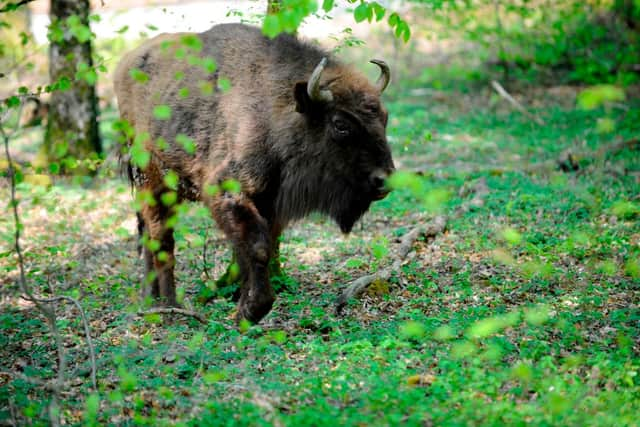Bison: wild European bison to be introduced to UK in Kent’s West Blean and Thornden Woods - are they dangerous
and live on Freeview channel 276
Bison are to be introduced into an ancient British woodland to help combat the nature and climate crises.
European bison, the continent's largest land mammal, are the closest living relatives to ancient steppe bison that previously roamed Britain and naturally maintained the habitat.
Advertisement
Hide AdAdvertisement
Hide AdThe bison will be released into a gated enclosure to help restore the woodlands by grazing, felling trees, chewing bark, and taking dust baths, which will open the canopy and provide new spaces for other creatures.
Here is everything you need to know about it.
Why are they being introduced?
The release, led by Kent Wildlife Trust and the Wildwood Trust, is part of a £1.12 million People's Postcode Lottery Dream Fund-funded project to manage West Blean and Thornden Woods near Canterbury, Kent.
The goal is to restore complex habitats to help wildlife survive and adapt to climate change, as well as to store more carbon in woodland to minimise the emissions that are driving up temperatures.
The animals will shift the forest away from being a monoculture, and create wetter zones that will not only store carbon but also lower flood risks.
Advertisement
Hide AdAdvertisement
Hide AdThe bison were set to be released early on Monday (18 July), before temperatures peak into the 30s and above as the UK swelters in a heatwave exacerbated by climate change.


Are bison dangerous?
It is the first time bison have roamed the British countryside in thousands of years, and they will soon be joined by other grazing species such as Exmoor ponies, Iron Age pigs, and Longhorn cattle, who will also establish a range of natural habitats.
Donovan Wright, one of the two bison rangers who will look after the animals' welfare, maintain the fencing and assist with public engagement described the creatures as an important keystone species that shape the area in which they live.
“They’ve got this remarkable ability to increase biodiversity just through being bison. We really need that in the woods,” he said.
Advertisement
Hide AdAdvertisement
Hide AdKent Wildlife Trust and Wildwood Trust say bison must be kept as wild as possible in order to exhibit natural behaviour and have the most positive impact on the environment, hence careful management will be required.
Wright added that the bisons’ feeding habits, including stripping back trees and rubbing off bark, create microhabitats for insects and fungi, as well as rides and glades that become home to plant species, and that their fur is even collected by birds for nesting.
“You get this ricochet effect through the ecosystem, so many species are able to benefit from the bison in the ecosystem,” he said.
Wright said he couldn't wait to see the first calf born from the herd, which will include a matriarch brought from Scotland, a bull from Germany and two youngsters from Ireland.
Experts say that despite their size, with adult males weighing up to a tonne, bison are placid, and no other species can execute the job of habitat engineering in the same way.
Comment Guidelines
National World encourages reader discussion on our stories. User feedback, insights and back-and-forth exchanges add a rich layer of context to reporting. Please review our Community Guidelines before commenting.
